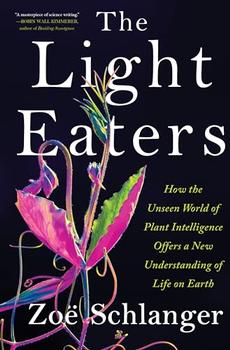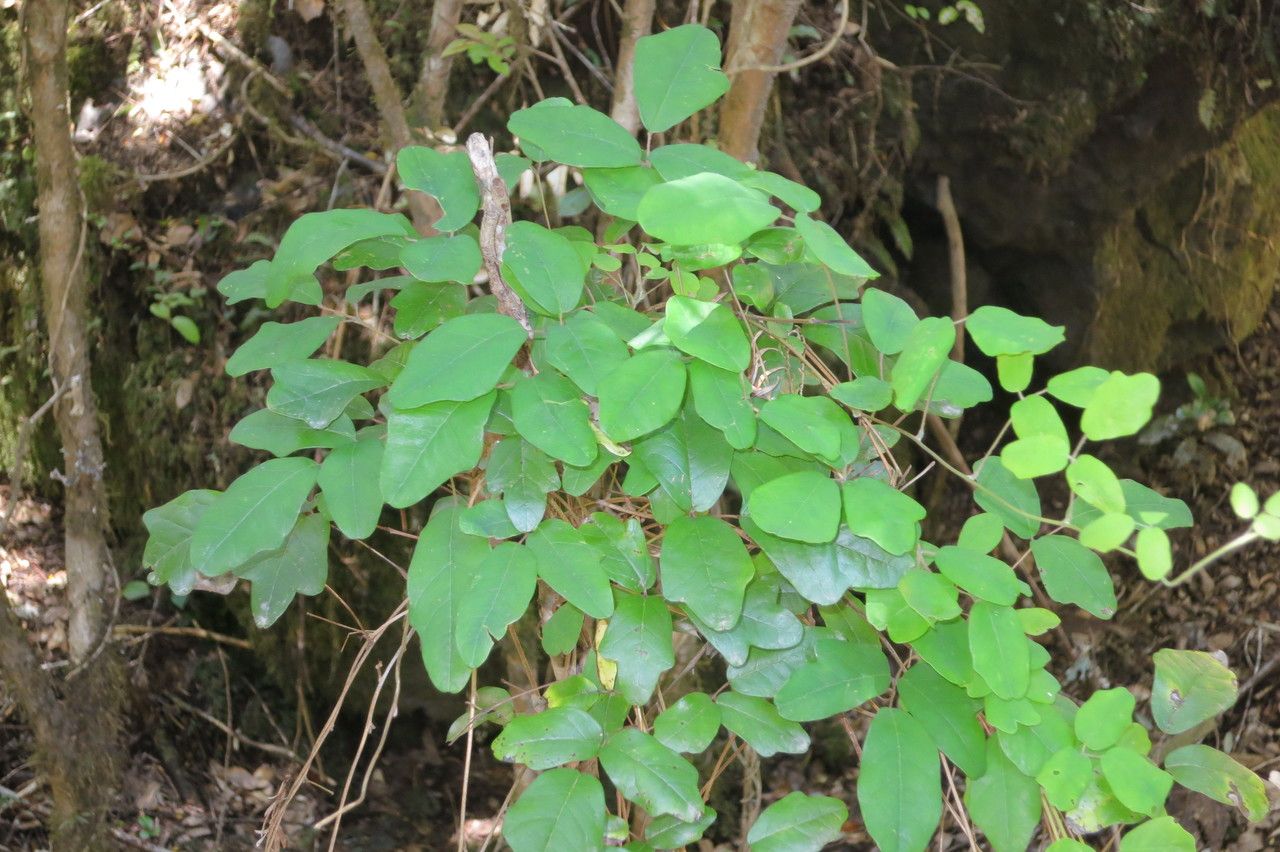Summary | Excerpt | Reviews | Beyond the Book | Read-Alikes | Genres & Themes | Author Bio

How the Unseen World of Plant Intelligence Offers a New Understanding of Life on Earth
by Zoë SchlangerThis article relates to The Light Eaters
 Zoe Schlanger's popular science book The Light Eaters goes in-depth on several remarkable plants, one of which is the climbing vine Boquila trifoliolata. This woody vine, found in the temperate rainforests of Chile and Argentina, has a unique strategy for hiding from herbivores—in order to blend in, it changes the shape of its leaves to match those of other nearby plants.
Zoe Schlanger's popular science book The Light Eaters goes in-depth on several remarkable plants, one of which is the climbing vine Boquila trifoliolata. This woody vine, found in the temperate rainforests of Chile and Argentina, has a unique strategy for hiding from herbivores—in order to blend in, it changes the shape of its leaves to match those of other nearby plants.
B. trifoliolata was first described in the 1800s, but its imitative abilities are a much more recent discovery. In 2014, Ernesto Gianoli and Fernando Carrasco-Urra published a report in Current Biology showing that the vine mimicked the leaf shape of eight different host plants. In the years since, that number has increased to more than 20 species. This vine is not the only example of plants imitating other species—Gianoli and Carrasco-Urra specifically mention Australian mistletoe, which has been shown to mimic the leaves of its most preferred host. However, each species of mistletoe must specialize in a single species of common host in order to do this. What's really special about B. trifoliolata is its ability to imitate a wide variety of other plants. It has even been shown that an individual plant can mimic multiple species.
A major question is how the vine manages this feat, and currently there is no definite answer. The initial paper by Gianoli and Carrasco put forth two possibilities: first, that volatile chemicals put off by the hosts could alter gene expression in the vines, or second, that microbes surrounding the host could carry genetic information from the host to the vine. In a 2021 follow-up study published in Nature, Gianoli and several colleagues found that there was greater similarity between the bacterial communities surrounding a host and a vine that was mimicking it and one that was not. This does not prove the second theory, but it does suggest it may be possible, and further research may be fruitful.
Another possibility was put forth in a controversial study by Jacob White, an independent researcher, and Felipe Yamashita, a graduate student at University of Bonn. In 2022 they asserted that B. trifoliolata uses ocelli, cells in the leaves which can focus light like a lens, in order to actually see the plants they are copying. In order to test this, they experimented by growing a vine on a plastic plant, which of course would be incapable of chemical signals or horizontal gene transfer, and reported that the vine was able to mimic the leaves of the plastic plant. However, their research has been highly criticized for poor study design and author bias, calling into question both whether the changes seen were genuine mimicry and the conclusion that ocelli were the mechanism for it.
Whether the answer is volatile chemicals, microbe clouds, plant vision or another as-yet unexplored process, figuring it out will increase our understanding of how plants work. Nothing known about plants prior to the discovery of the vine’s mimicry can explain it. As Gianoli says in The Light Eaters, "...if we are able to crack this, if we are able to discover the mechanism underlying boquila's capacity to do this, most likely we will get into a new concept. A new process. A new interaction. A new … something." Boquila trifoliolata’s remarkable ability reminds us not to take the plant kingdom and its incredible diversity for granted—there’s so much still left to discover.
Boquila trifoliolata, courtesy of Daniel Barthelemy and Pl@ntnet
Filed under Nature and the Environment
![]() This article relates to The Light Eaters.
It first ran in the May 15, 2024
issue of BookBrowse Recommends.
This article relates to The Light Eaters.
It first ran in the May 15, 2024
issue of BookBrowse Recommends.




A library is thought in cold storage
Click Here to find out who said this, as well as discovering other famous literary quotes!
Your guide toexceptional books
BookBrowse seeks out and recommends the best in contemporary fiction and nonfiction—books that not only engage and entertain but also deepen our understanding of ourselves and the world around us.